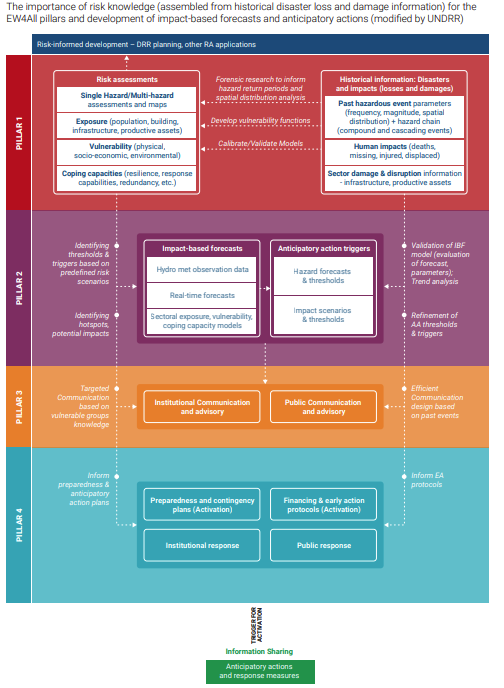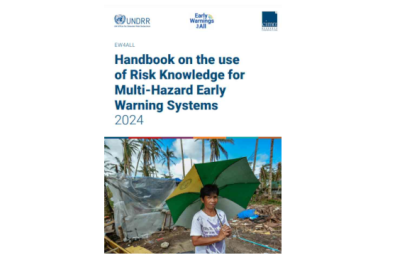Since several decades ago, developed and developing countries began to implement early warning systems to reduce the impacts of natural hazards such as severe weather, floods, and tsunamis. In March 2015, 187 Members States of the United Nations committed to substantially increase the availability of, and access to multi-hazard early warning system as one of the targets included in the Sendai Framework for Disaster Risk Reduction 2015-2030. More recently, the Secretary General of the United Nations launched the Early Warnings for All initiative to protect and save the vulnerable communities from the worst impacts.
To continue these efforts, the United Nations Office for Disaster Risk Reduction (UNDRR) recently published the Handbook on the Use of Risk Knowledge for Multi-Hazard Early Warning Systems (2024), as a guide to enhance the enhance the use of risk information in early warning systems. This handbook emphasizes the integration of detailed, context-specific risk information on hazards, vulnerabilities, and exposure to enhance the effectiveness of such early warning systems.
Key guidelines in the handbook include the use of tailored data to set clear anticipatory triggers, which help with proactive responses to threats, ensuring vulnerable populations receive timely, appropriate warnings. It also highlights the importance of multi-channel communication strategies, especially to reach underserved communities, and stresses regular testing, community involvement, and feedback mechanisms to strengthen EWS operations continually. This publication aligns with EW4All’s goal to expand EWS capabilities and make them accessible to all, especially in high-risk and resource-limited areas globally.
The content is structured along the four pillars of the EW4All initiative:
- Second Chapter: Standards and cross-cutting guiding principles for the production and use of risk knowledge and information specific to EWS (Pillar 1)
- Third Chapter: Risk information for monitoring and forecasting (Pillar 2)
- Forth Chapter: How to use risk information to improve the dissemination and communication of warnings (Pillar 3)
- Fifth Chapter: How to use risk information to improve preparedness to respond (Pillar 4)


